NASA's Next Great X-Plane Will Try to Revolutionize Electric Flight
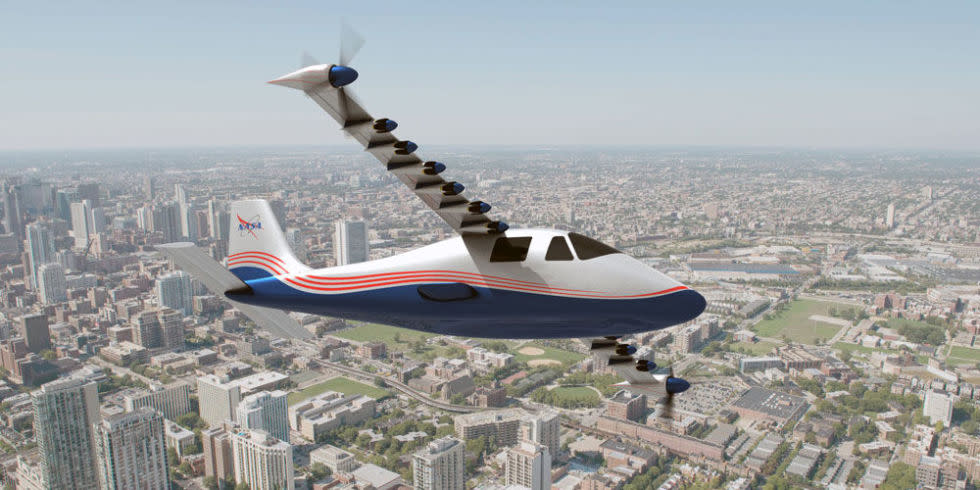
Electric cars are coming into their own. Every major car company in the world is researching battery-powered vehicles, hydrogen fuel cell vehicles, and a variety of fuel-battery hybrids-if they haven't already brought one to market.
Things are going to be more difficult with aircraft. The challenges of electric flight are multifold, stemming from the fact that modern batteries can't put out enough juice to compensate for their weight. NASA's newest experimental plane, however, is designed to crack the code of battery-powered aviation.
Unlike an electric car, an electric plane will need fundamental changes to not only the propulsion system, but also the aerodynamic design of the aircraft itself. NASA's solution? An X-plane with 14 electric motors-12 of which will make up a "distributed electric propulsion system" on a thin composite wing. Say hello to the X-57 Maxwell.
A Dozen Little Motors
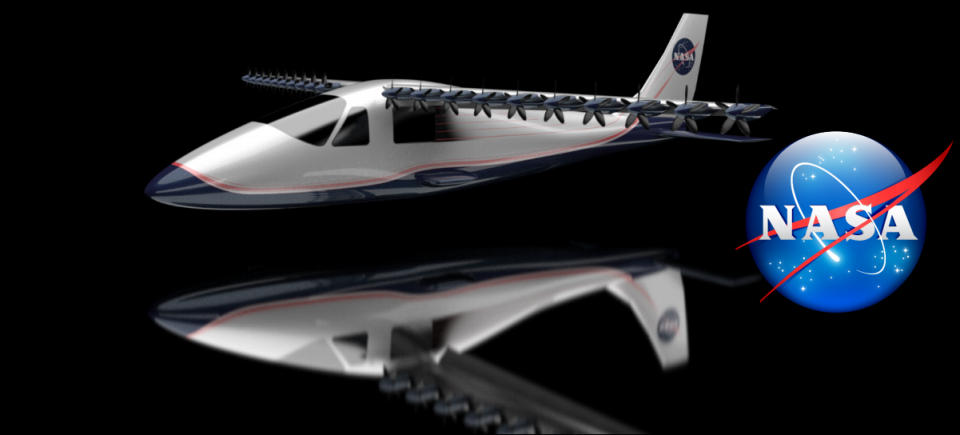
When it comes to airplane wings, bigger means more lift, but it also means more drag. It's the great catch-22 of aircraft design: Make a wing big to produce enough lift to take off on a standard runway, and you inevitably increase drag and efficiency suffers in cruise. Make the wing smaller so you get more efficient flight at high speeds, and you have to take off at high speeds to achieve enough lift to get into the air, requiring a longer runway. A thin wing also means you need to land at high speeds, which can be dangerous.
"What we're doing with all of this distributed electric propulsion is we're making the wing at low speed much more effective," Nick Borer, technical lead on the X-57 Maxwell, told Popular Mechanics at NASA's Langley Research Center in Virginia. "A big wing turns into a whole lot of drag at fast speed. So we're just saying, why not make the wing much more effective at low speeds? And then that way you can get away with that tiny wing at higher speeds."
Borer and the X-57 team's solution is to use a dozen small, electric "high-lift motors" that accelerate airflow over the wing. This extra airflow will provide more lift at slower speeds, ultimately allowing the plane to take off on a normal runway. Once the X-57 gains altitude and velocity, the 12 lift motors shut down and the propellers fold back into a more aerodynamic position. The actual propulsion of the craft will come from two larger electrically-driven propellers mounted on the tips of each wing.
Upon landing, the dozen high-lift motors fire up again to provide the necessary lift to approach the runway at a slower speed than cruise. The 12 little motors are not intended to propel the craft forward at all, says Borer, but rather "are there only to provide lift during takeoff and landing."
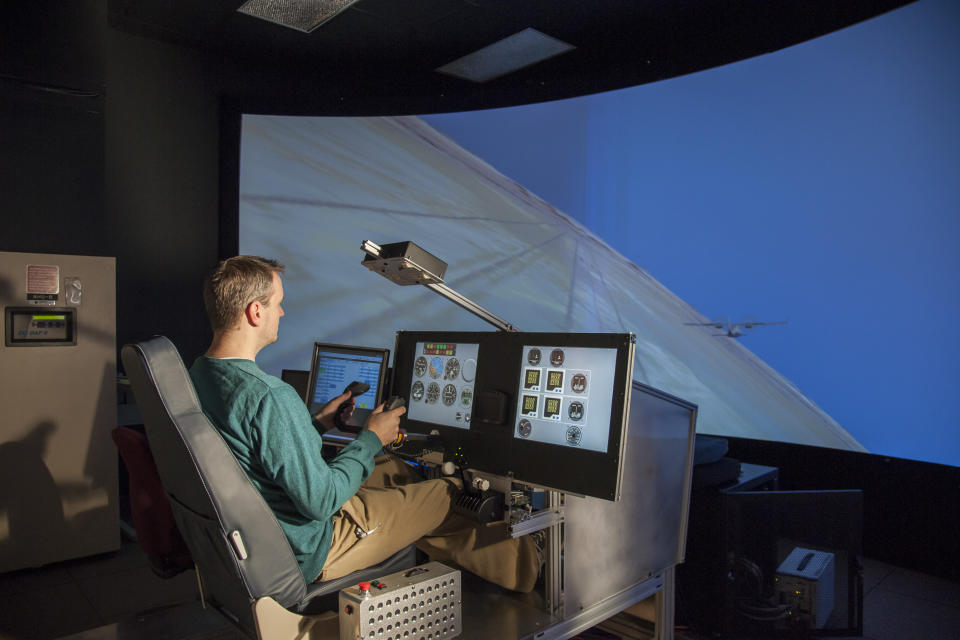
Electric flight has been studied for over a century, but even today the only electric aircraft you see are experimental demonstrators. The wing-size conundrum is only the beginning of a long list of compromises. More power and more range requires more batteries, for example, but lifting a plane full of lithium-ion batteries into the air isn't the same as bolting a battery to the undercarriage of a car.
"Batteries are a huge portion of our weight right now," says Borer-about 850 pounds pulling the aircraft down.
Tesla's Model S can hit up to 779 bhp, 920 ft-lb of torque, and a range over 250 miles-partly because the electric automaker can mount the enormous battery under the car and get away with the extra weight. The heavy battery on a Tesla lowers the car's center of gravity, providing more traction, and lighter materials can be used elsewhere in the chassis to make up the difference. On an airplane, you can't just bog down the craft with heavy batteries and strip down the frame to compensate. The X-57 is a bird that requires a little more get-up-and-go.
The Long Road to the X-57 Maxwell
The X-57 Maxwell program incorporates a number of prototypes. In fact, the first test of the X-57, known as Mod I, wasn't an airplane at all-it was a semi truck. To test the high-lift motors that will be used on takeoff and landing, NASA drove a semi with a mounted test wing along Rogers Dry Lake, the famous aircraft landing site at Edwards Air Force Base in the Mojave Desert of Southern California.
The experimental wing had 18 small electric motors designed to accelerate air over the wing and produce extra lift as the truck drove down the hard-packed dirt runway. The tests, conducted in May 2015, validated the technology, demonstrating the high-lift engines could be used to produce more than twice the lift as a conventional wing and propulsion system.
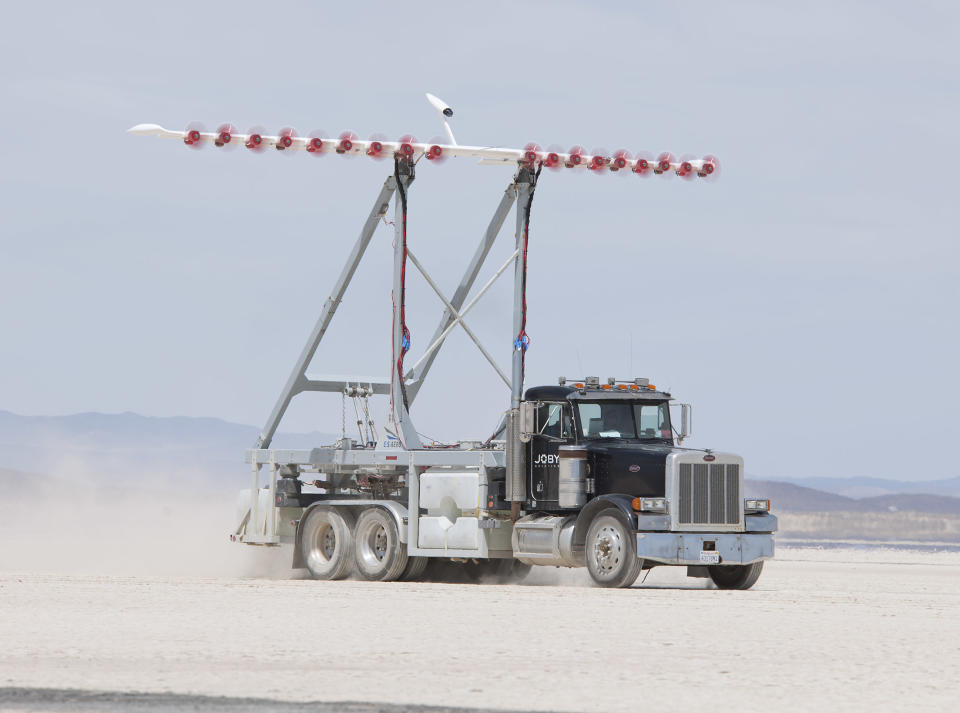
Mod II will be an actual airplane, but it won't have the small high-lift motors. It also won't have the thin composite wing that the final iteration of the X-57 will have. The X-57 is based on the Italian twin-engine Tecnam P2006T. The P2006T's fuselage will be used to build the all-electric X-57 with a thin composite wing and 12 high-lift motors, but NASA is going to take that aircraft transformation one step at a time.
First things first-make it electric. Mod II of the X-57 will look much the same as the Tecnam P2006T, but many of the internal components will be ripped out and replaced with electric systems, including additional instrumentation that will take up the co-pilot's seat-and that 850 lbs. battery pack, built by Electric Power Systems (EPS), which fill up the back seat and baggage area. The two inboard combustion engines will also be replaced by two electric motors. The P2006T airframe that is to be modified arrived at the Mojave Air and Space Port last year, where Scaled Composites is currently working to convert it to an electric airplane. According to Borer, the team hopes to start flight testing the Mod II in late winter or spring of 2018.
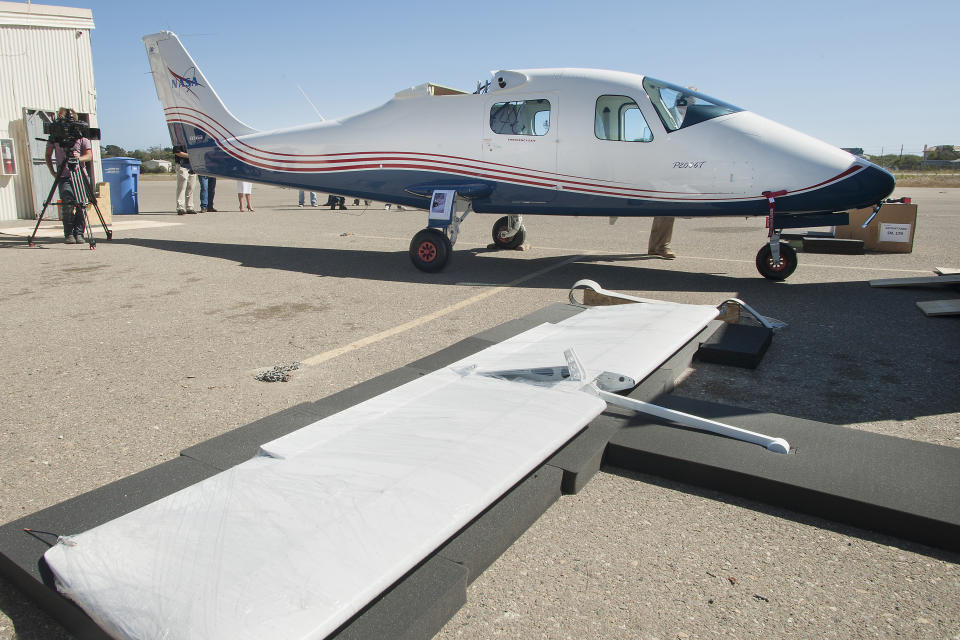
Then comes the next major transformation of the aircraft: Mod III. NASA and its aerospace industry partners, including prime contractor Empirical Systems Aerospace (ESAero) out of Pismo Beach, California, will outfit the aircraft with a thin composite wing, move the primary cruise engines to the wingtips, and install dummy pylons on the wing in place of the 12 high-lift motors. Composite manufacturer Xperimental designed the thin carbon fiber wing, which will be subjected to wing loading pressures of 45 lbs. per square foot compared to 17 lbs. on the stock aluminum P2006T wing.
NASA will then replace the motors mounted on the inner wings with lighter, 60-kilowatt motors developed by Joby Aviation out of Santa Cruz. The new electric motors, however, will be mounted out at the tips of the carbon fiber wing. Then 12 dummy pylons will be installed to simulate the weight and drag of the high-lift motors.
"The Mod III aircraft, we're designing it for 150 knot cruise at 8,000 feet," says Borer. The stock P2006T has an equivalent cruise speed of about 140 knots. The aircraft will be limited by battery power, achieving only about 40 minutes of flight, but Borer mentions he "calculated if we had the energy to actually climb that high, we could cruise at 40,000 feet."
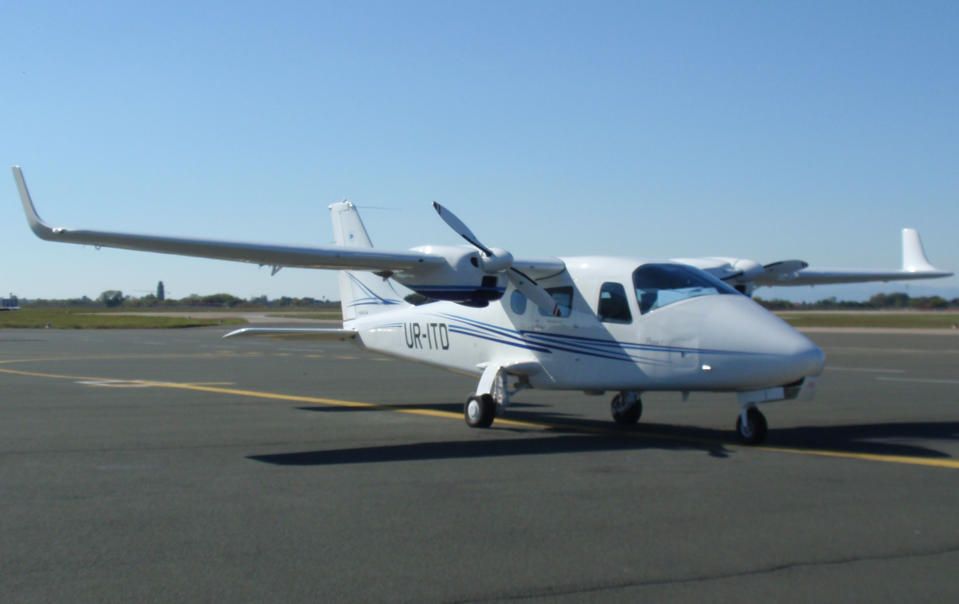
Without the high-lift motors, Mod III will require a long runway for takeoff and landing. NASA plans to flight test Mod III on Rogers Dry Lake, where the Air Force famously tested the first rocket-powered X-planes. Aircraft have miles and miles to take off and land on the flat, dry lakebed. The tradition of X-plane testing at Edwards that started in the 1940s with Chuck Yeager and the Bell X-1 will continue with the X-57.
"What we're trying to do, basically, is risk reduction. So we had to invent a new electrical system for the airplane, so Mod II tests that electrical system," says Borer. "We get a flight sign off for that. Then Mod III, we put on this new skinny wing, put those motors out at the wing tips. We want to test a lot of things out about that, get that sign off. Then we can go to Mod IV and say, 'Now can we really put these all together?'"
Mod IV, which is currently being reviewed for funding, is where the X-57 completes its transformation to a full-fledged efficient electric aircraft. After Mod III flight tests, electrical engineers will work to pull off the dummy pylons and replace them with the real deal-the 12 high-lift electric motors, similar to what were on the semi back in Mod I. With 14 motors total, 12 just to provide lift on takeoff and landing, the X-57 Maxwell will be ready to test the whole package, and we will learn if the future of flight is indeed electric.
Maxwell's Future
When Mod IV flies in all its electric glory, potentially as soon as 2020 or 2021, the X-57 Maxwell's contributions to flight won't be done yet. Borer has big plans for the Maxwell.
If Mod IV works in the air like it does on paper, the future benefits could be enormous. NASA has stated that the X-57 could result in a "five-time reduction in the energy required for a private plane to cruise at 175 mph." Not only that, but an electric plane could fly faster and higher more efficiently. The closer a conventional airplane flies to top speed, the worse the fuel efficiency is, and the higher it flies, the less power it can put out. Both of these problems could be mitigated by electric flight.
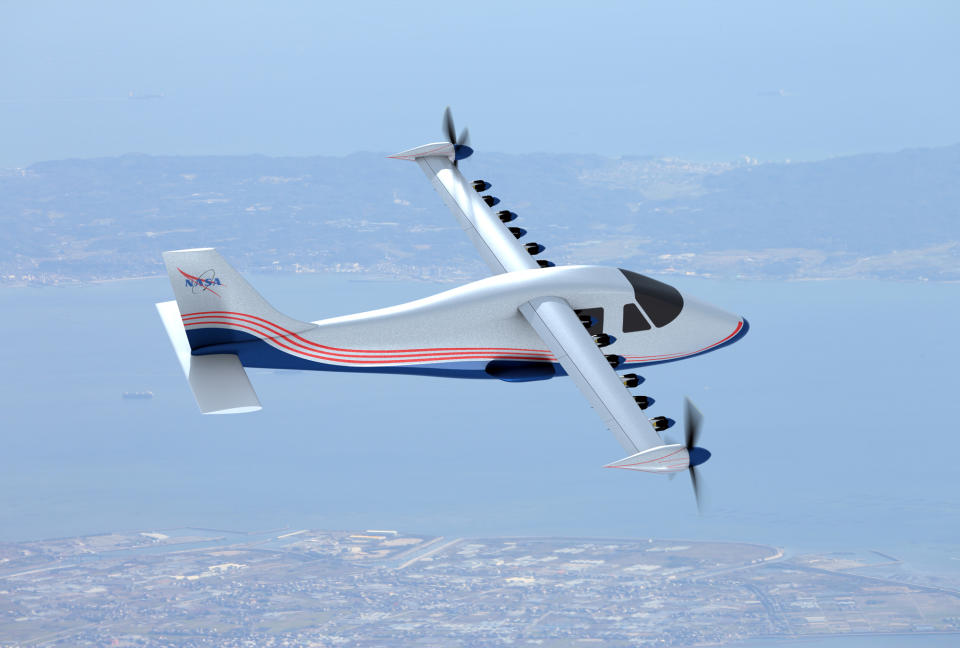
"So you take a Cessna today, and you fly at sea level. That motor will put out, depending on what type of Cessna you have, 160 to 180 horsepower," says Borer. "You fly out of Denver where the air is much thinner, and that engine might only be putting out 120 horsepower. If you take an electric motor that doesn't need air, a 160 horsepower motor, it will put out 160 horsepower no matter what altitude you're at."
These types of calculations are considering personal piston-driven propellers, like Cessnas, and to a certain extent business jets. The small plane market is surely going to reap the benefits of electric flight first, and then aerospace engineers will see if some of the technology can be integrated on larger planes, perhaps even airliners.
But there remains a huge problem: batteries. The range of electric planes is just not going to be practical until battery technology improves. An electric plane is taking on too much extra battery weight. Of course, battery technology is relevant to hundreds of industries, and electric aviation will no doubt benefit from next generation battery research.
Until that time, Borer has an idea: Make the X-57 a hydrogen fuel cell aircraft that runs on diesel.
"We're going to pitch that as a flight program. And what will be kind of interesting about that is, for the same weight as what we have for batteries on X‑57, we go from 40 minutes of flight to about three and a half hours."
Fuel cells generate electricity to power electric motors, generally with oxygen from the air and compressed hydrogen. The resulting emissions are nothing more than heat and water. But you don't need hydrogen fuel to power a fuel cell-you can use diesel. "You can store diesel fuel on this airplane, and it converts that," Borer says. "It rips the hydrogen off of the diesel fuel." The diesel fuel cell system does end up producing some carbon dioxide, but only about half as much fuel is needed compared to piston engines.
Such a diesel-powered fuel cell vehicle would allow the aircraft to fly all over the world, considering hydrogen fueling stations are still few and far between but diesel is fairly common. NASA is also researching new ways to mount batteries in the fuselage or wings, mitigating the burden of carrying a large battery pack in flight.
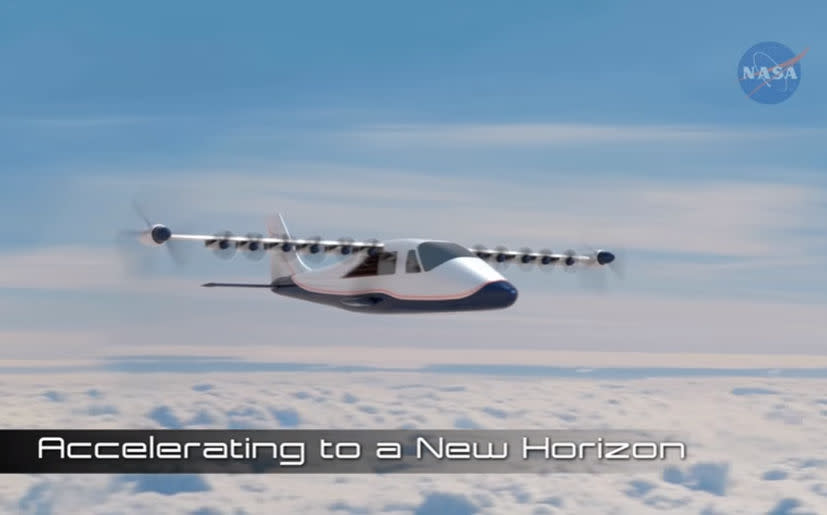
And one more thing-computers. If the high-lift motors work as advertised, then they present a new opportunity for advanced flight controls.
"When you go from two to 12 to 14 motors, there's a whole bunch of new stuff that as an aircraft designer you never really thought about before that you can start to think about," says Borer.
Instead of having all the high-lift motors run at the same speed, as they will on Mod IV, a future iteration could include a computer control system to automatically vary the speed of the small motors. Running at the same speed, the lift distribution across the wing isn't exactly uniform, explains Borer, but that could possibly be corrected by running the inner motors faster and the outer motors slower. In rough weather, the lift-motors could automatically fire up on one side of the airplane to stabilize the craft. And if a main engine should blow out, the lift motors could be used to compensate in an emergency landing situation. All of this is much too complicated for a pilot to deal with-no one can operate 12 throttles with such adroit finesse-but a flight control algorithm might be able to solve that problem.
Will future airliners run on batteries with a dozen engines distributed across a thin wing? It's anyone's guess. The X-57 Maxwell, however, will put the technology to the test for the first time over the dry lakebed at Edwards, where the future of electric flight could take form.
You Might Also Like

